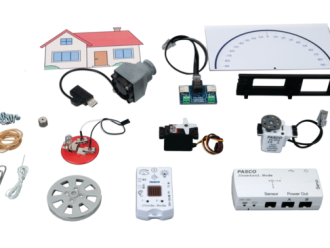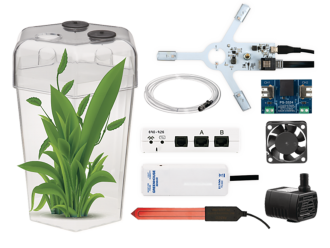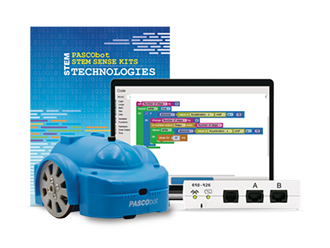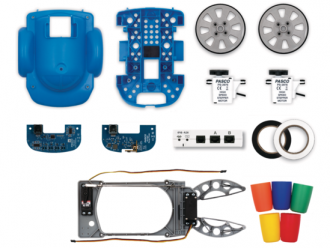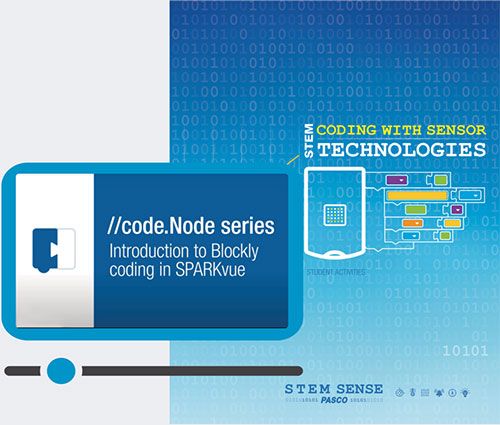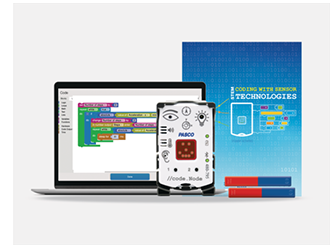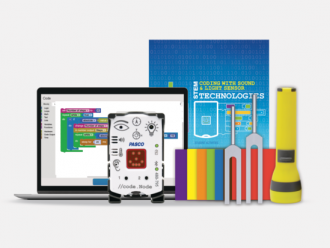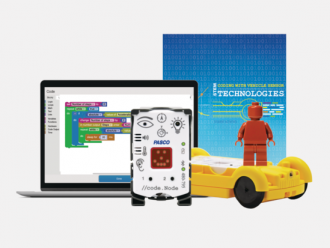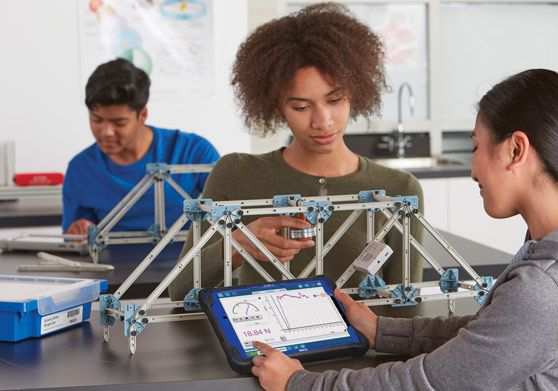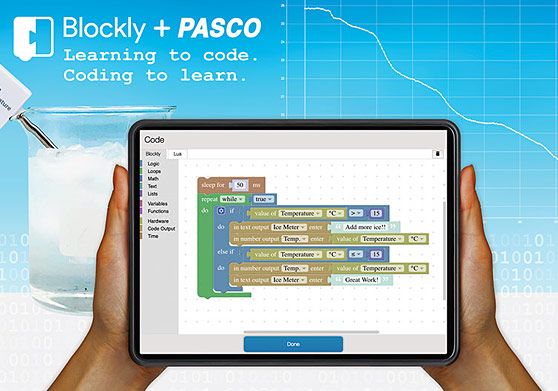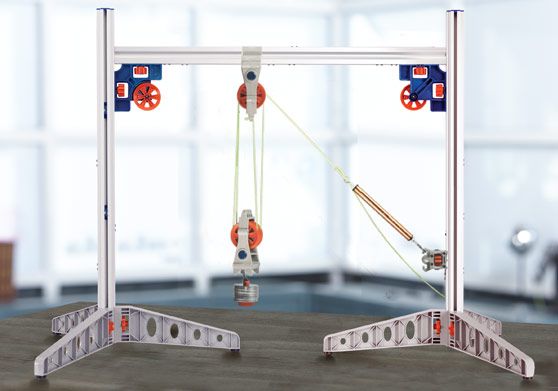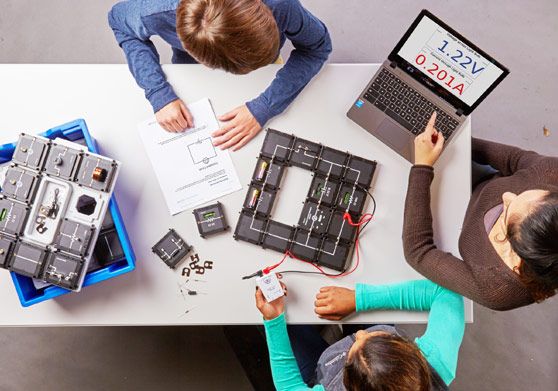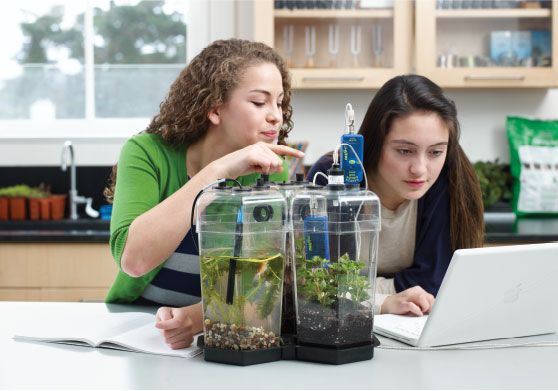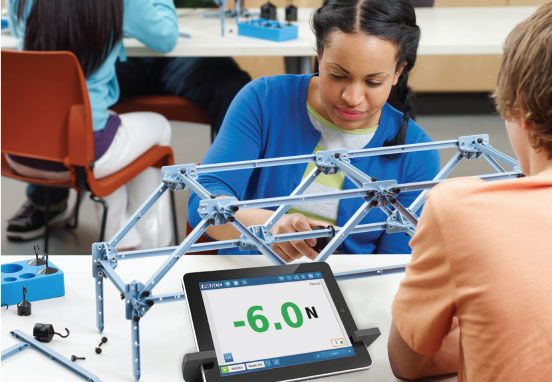Jump Start Your STEM Program
STEM Sense Student Activities
Activities
STEM Sense Kits offer educators full flexibility with customizable activity sheets, an interactive flipbook, and engaging video lessons that make it easy to support student learning whether they’re in the classroom or at home.
Sensing
Support science and data literacy with live sensor data, interactive displays, and intuitive analysis tools that bring investigations to life. Kick-start your STEM experience with the //code.Node, then add additional sensors for unlimited possibilities.
Coding
The Blockly integration within PASCO’s data software helps familiarize students with the basics of programming, while providing them with customizable blocks and robust data features that enable them to apply their knowledge in a variety of real-world investigations.
Each complete kit arrives ‘classroom-ready’ with a Student Activities Booklet and editable, digital teacher resources. The booklets include engaging hands-on activities with step-by-step instructions, sample programs, and student questions that align with state and national science standards, as well as computer science standards. The accompanying digital resources include editable versions of the student activities, teacher answer keys, and an Interactive Flipbook with embedded student video lessons.
STEM Sense Activities skillfully scaffold concepts to ensure students are consistently engaged and developing their skillsets. Each booklet begins by introducing students to foundational coding blocks, concepts, and skills to help them build confidence using Blockly and the //code.Node. As they progress further into the investigations, students are challenged to apply their new knowledge to code-driven investigations that explore the science and sensors behind real-world technology.
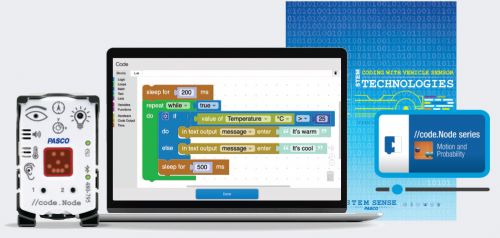
Science and STEM topics include:
- Automotive engineering
- Probability and random numbers
- Properties of sound and light
- Magnetism and magnetic poles
- Position, acceleration, and rotation
- Properties of colour and colour mixing
- And more!
Computer Science Topics Include:
- Boolean logic
- Algorithms
- Variables
- Conditionals
- Input and output functions
- Loops
- Array indexing
- And more!
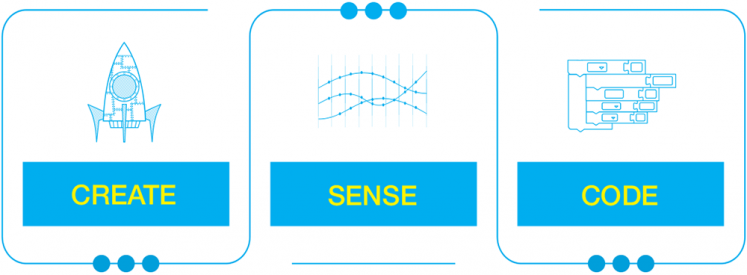
PASCO’s STEM Sense solutions promote early excellence in science and STEM education with cross-curricular investigations that help young learners build strong foundations in science, programming and data literacy. Each complete kit includes a hands-on coding device, an editable Teacher Manual, video support, and additional resources to support the seamless integration of real-world STEM investigations into middle school science courses, STEM programs, and makerspaces.
A Future Driven by STEM
Engaging Students in Technology for Experiential Learning and STEM Education
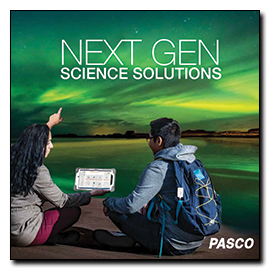
As digital natives, today’s students are comfortable exploring new technology, yet many continue to struggle with mathematics and science standards. STEM (science, technology, engineering, and math) education prepares modern learners for a future rich in information and technology by engaging them in the exploration of natural phenomena.
Engaging students of all ages in STEM learning cultivates a range of technical and soft skills, including critical thinking skills, problem solving, perseverance, design thinking, collaboration, computational thinking, and creativity. Effective STEM activities integrate standards into open lessons within the context of real-world phenomena. Students usually begin with an introductory lesson that relates STEM to a real-world problem. Then, they’re asked to solve the problem using a variety of methods, including research, collaboration, inquiry, and testing. These real-world challenges encourage students to act as scientists as they research the issue, form an understanding, develop a solution, test, fail, collaborate, and succeed. Whether they’re programming, building, or measuring, STEM invites students to transition from observers to active participants in the learning process.


